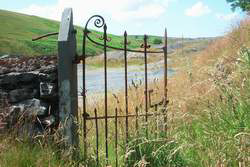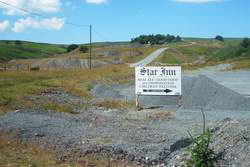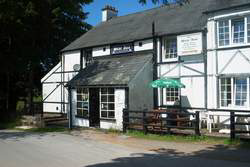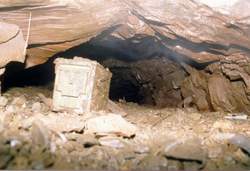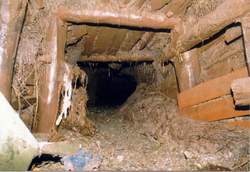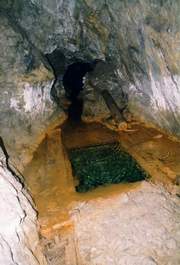Clearly the abandonment of Dylife took place in a gradual manner. From the late 1860s staffing requirements declined. Some employees may have taken a voluntary decision to move away and seek work elsewhere, others would have received their notice. To some extent workers in the mining industry at that time would have been used to fluctuations in their working environment. They may have attempted to put down roots, especially if they had parental responsibilities, but in the back of their minds would have been the possibility of redundancy. It is likely that the more enterprising, or those with additional skills, would have been more inclined to move away, and at that time it would have been relatively easy to find a job elsewhere, especially in the coal mines of the South Wales valleys. Some, however, would have been reluctant to leave, and, as we have seen, a small number of miners attempted to keep production going even after the formal closure of the mines.
A few people went on living at Dylife after 1901. In 1921 there were 12 pupils on the school register, but in 1925 the school was closed. The last marriage at St David's church took place in 1915, and the last christening in 1926.
Two of the chapels at Dylife have been converted into houses and still exist. The church was demolished in 1962. The other building to have survived is the Star Inn. It still provides refreshments, meals, and overnight accommodation.
Today's visitors to Dylife are likely to fall into one or more of the following categories:
* Cyclists. Route 8 of the National Cycle Network passes this way, on its way from Cardiff Bay to Holyhead.
* Walkers on Glyndwr's Way. They will continue at first along the route taken by the horse drawn carts laden with lead ore, but will diverge later and come into the town of Machynlleth, where Owain Glyndwr convened a Welsh parliament six centuries ago.
* Explorers of disused mine workings. Above ground you can see the remnants of buildings,
the pits of waterwheels, reservoirs, and the leats that carried water from them.
If, unlike myself, you are willing to venture underground there is far more to see.
The last chapter of Michael Brown's book contains a map of the main workings, and
photographs, diagrams and detailed descriptions of adits, stopes, tunnels, pools
of water, shafts, and winzes.
Alternatively, go to the website of the Clwyd Powys
Archaeological Trust to read about a detailed survey of the Dylife mines .
These three photographs have been supplied by Mike Munro
